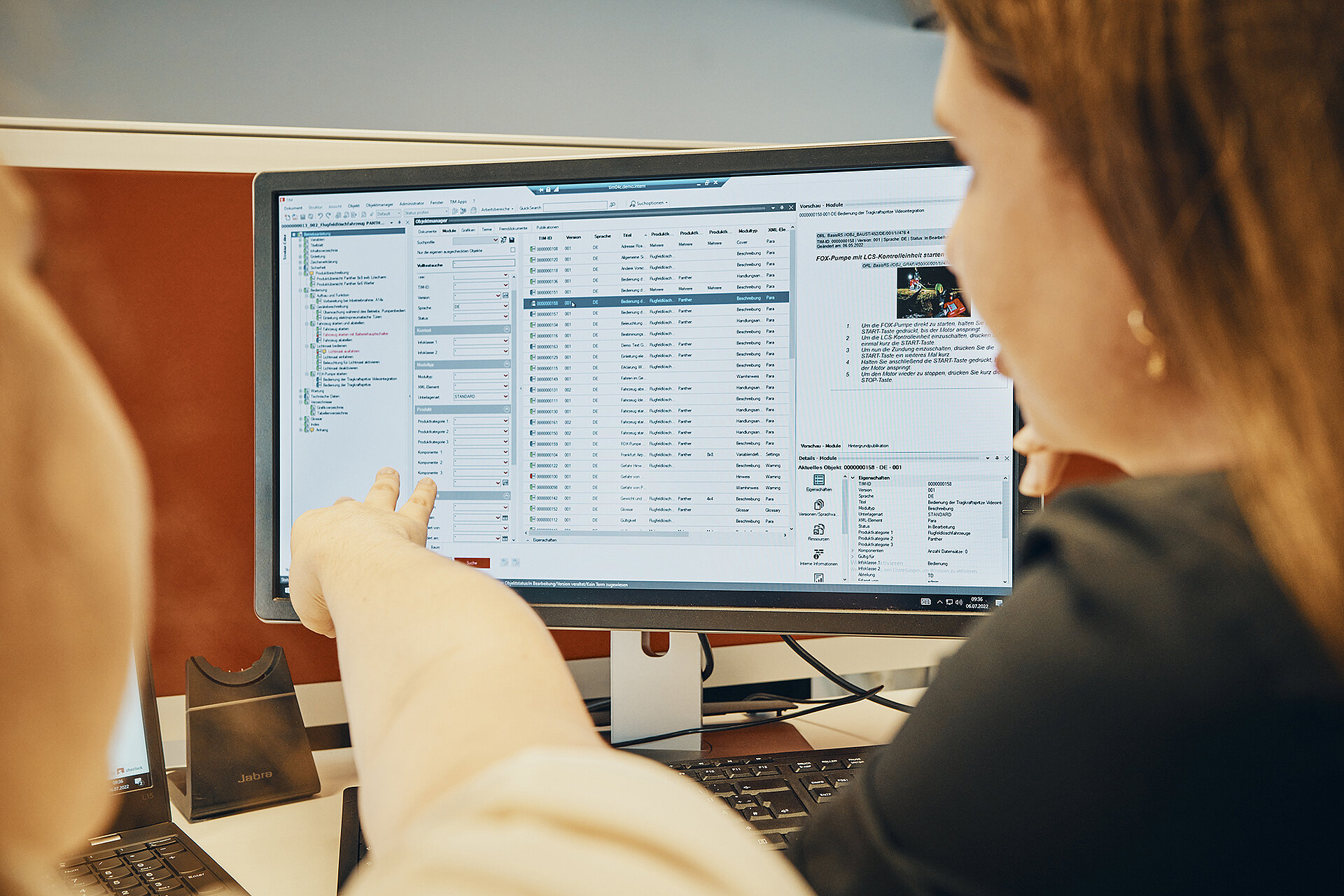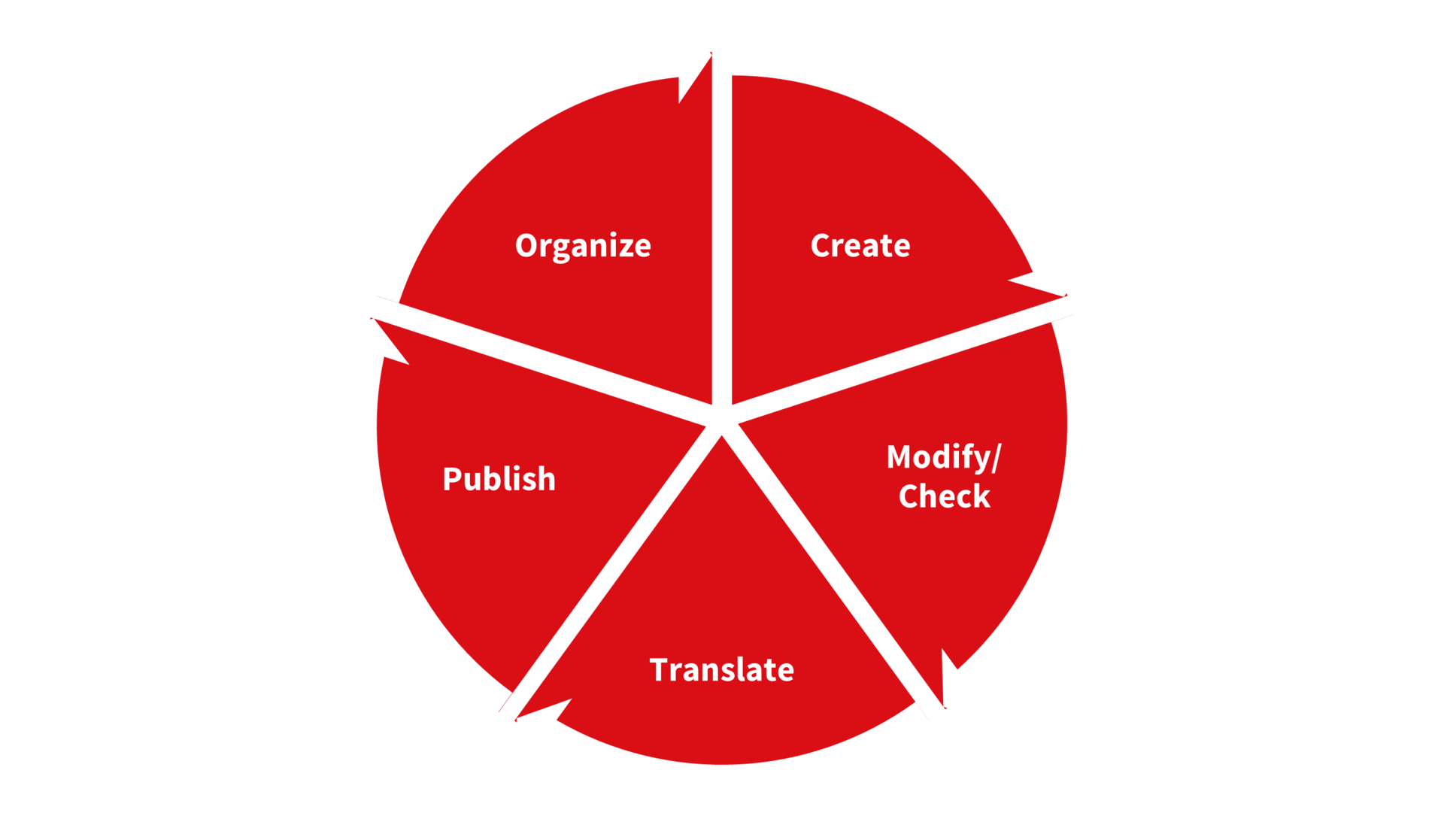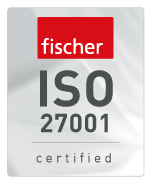In an increasingly complex business world, clear and precise documentation is becoming more and more important. In the technical field in particular, error-free documentation is of immens importance. Companies that don't have suitable systems for documentation can quickly lose track of things and expensive mistakes are the result. In this blog post, I will explain what an editorial system is and how it can help you improve your technical documentation.
What is an editorial system?
An editorial system/content management system (CMS) is a software solution specifically designed for the creation, management and publication of technical documentation. It enables technical writers to organize, create and distribute documents in an efficient and consistent way. In addition, an editorial system ensures that documentation is always up-to-date and available at all times.
How does an editorial system work?
As a rule, an editorial system works on the basis of markup languages such as XML or HTML. The documents are created in a structured format that allows them to be used and published in a variety of ways. The objects are stored in a database and their content can be edited using special tools such as an XML editor. This allows editors to create, edit, and manage content without having to worry about layout or formatting.

Advantages of an editorial system
An editorial system offers a variety of benefits when it comes to creating, managing and publishing technical documentation. Here are some of the most important advantages:
Efficient content creation and management
Content creation is made easier through the use of templates and standardization of processes. This means you can focus on creating content without worrying about formatting. An editorial system also makes it easy to update and manage content by providing a central database for all documents. Efforts for layouting, including translated documents, and referencing problems are thus a thing of the past.
Better collaboration and consistency
With a common platform for document creation, collaboration between authors is greatly facilitated. This means that you can work on a document with several editors at the same time without interfering with each other. In addition, the consistency of the documentation is ensured by the editorial system checking whether the technical editors use the same or predefined templates and guidelines. Guidelines can relate, for example, to the macro structure or the functional design of the documents, but also to writing style and terminology. The module-centric approach also shortens documentation creation times.
Flexibility and reuse
A CMS allows you to create content in a variety of formats to use for different purposes. In addition, content can be easily updated and reused, so you don't have to rewrite the entire content. By means of a where-used list, it is always possible to trace at what time and in what status an object was reused.
Translation Management
By centrally storing all information in a database and managing the status of the objects, only the content that is actually new and not yet translated is sent for translation. This saves you immense costs in this process - the more translation languages you serve, the higher your savings potential.
Effective publication and distribution
An editorial system makes it easy to publish and distribute documents and information. It can export content in different formats, such as PDF or HTML, online help, or publication to a content delivery portal - depending on what is needed. Integrated workflow management solutions also ensure that the right people review and approve documents before they are published.
Automation
Recurring tasks in technical editing can be automated in the editing system. This means that the process step to be performed manually is simply omitted and can be triggered, for example, by a status change of objects. It should be noted here that automation only makes sense once the corresponding processes have been standardized.

Which editing system is right for my technical documentation?
The be-all and end-all of an efficient editorial system is, in addition to intuitive usability, a wealth of tools or extensions that enable you to save time and at the same time increase the quality of your technical documentation. In addition, the demands on today's technical editors have changed. The world is spinning faster than ever, and time is money.
That is why it is important to approach the topic of "variant management" in the right way. The product range of many companies is constantly growing. Products are developed and produced in a wide variety of variants to meet the changing requirements of the target groups. Often the products can also be independently configured by customers to meet their needs. However, this also means that corresponding operating manuals must be created for all possible variants, and this must be done as efficiently as possible and without additional work. Fischer's TIM editorial system offers sophisticated variant management that enables you to meet precisely this challenge.
Furthermore, users expect quick and targeted answers to their questions: keyword "user-oriented information provision". Nowadays, no one wants to fight their way exclusively through pages of PDF documents to get an answer to their question. With Fischer's Content Delivery solution, you can make the content you maintain in TIM available to end users in a simple, digital and user-oriented way.
But not only your customers, also your colleagues in the departments do not want to scroll through pages of PDFs. Make your information available for internal proofreading in a web-based application and carry it out in a traceable and audit-proof manner. In the TIM Review Service, feedback is given in a modular and targeted manner at the information object. A link from there to TIM makes subsequent identification and modification of the object particularly easy.
TIM Authoring Support powered by Congree supports you already during the creation of your texts in the source language. Increase the comprehensibility of your texts for your customers through consistently formulated texts and save money in the subsequent translation process at the same time. Congree also ensures that you use the correct terminology and spelling.
Technical editing is also project management. The list of tasks for an editor is long and varied. Furthermore, there is a constant exchange with many different departments. So how do you keep track of this abundance of tasks, projects and people? With the TaskPro Manager of the editorial system TIM! Projects and tasks can be planned and managed intuitively, you always keep the overview and can react in time.
What are the disadvantages of an editorial system?
Of course, the introduction of an editorial system costs money at first. The selection process for the right CMS, the introduction phase of the software and the conversion of the editorial process do not happen overnight. Nevertheless, the effort pays off after a short time: the return on investment is usually between 12 months and 2 years, largely depending on your individual editorial parameters. But should the investment in suitable software really be considered a disadvantage? Provide your technical editors with a modern and attractive solution. After all, in your mechanical design department, you no longer work with a pencil on a master print, do you?
Conclusion
An authoring system is an indispensable tool for companies that need to create, manage and publish technical documentation. It enables technical writers to create and manage content faster and more efficiently, improves collaboration between authors, provides better consistency in documentation, and facilitates content updating and publishing.
The reuse of modules in particular not only leads to an increase in efficiency, but also to immense cost savings. Automated workflows for publication and translation processes also significantly increase the quality of technical documentation, in addition to elaborated review systems. In summary, an editing system is an investment that pays off in the long term and represents an enrichment for your technical editing department.


